That morning, there was no getting away from food.
I was in Kaohsiung’s Yancheng District (鹽埕), trying out some of the neighborhood’s older and more distinctive eateries. Knowing I had to pace myself — to seek respite from repasts, if you will — I went into a temple I’d not noticed on previous trips to this part of the city.
Shaduo Temple (沙多宮) is dedicated to five Wangye (王爺) spirits, or Lords of a Thousand Years (五府千歲). If the baskets of fruit, trays of candy, and packets of cookies on the main offertory table are anything to go by, the deities honored here have a good appetite and a sweet tooth.
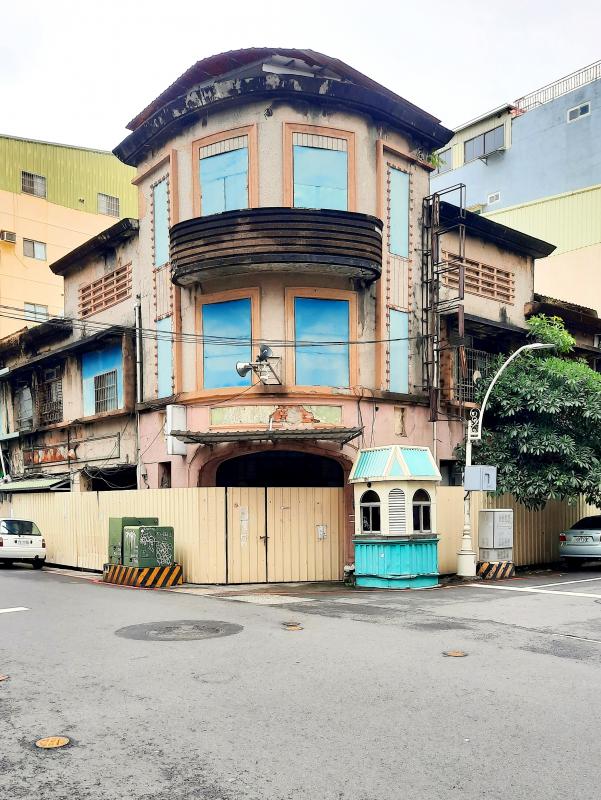
Photo: Steven Crook
The alleyways behind the shrine, which is at 49 Fuye Road (富野路), looked invitingly labyrinthine. Within minutes, I’d stumbled across the picturesque ruins of a cottage constructed using coral stone, unhewn rocks, bricks, and tiles. A man locking up part of the wreck told me the building is at least 90 years old.
I could glimpse the roof of, but not get a proper look at, a two-floor mansion that I later discovered was built for Lin Chia (林迦, 1888-1972), an entrepreneur and philanthropist once hailed as “the richest man in Yancheng.” The scale of this abode, which combines Western and Chinese architectural elements, and its garden are obvious if you look at satellite images of the neighborhood.
CONGEE AND CLINIC
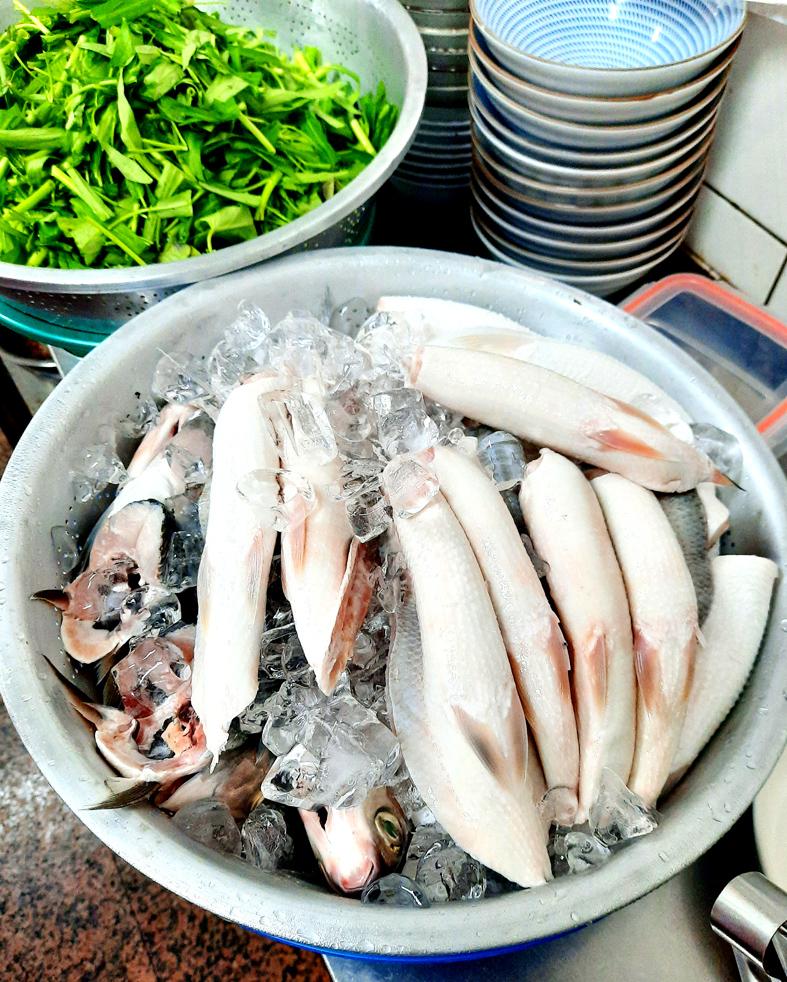
Photo: Steven Crook
My gourmand tour had begun an hour earlier, at Old Tsai’s Milkfish Congee (老蔡虱目魚粥) at 201 Lainan Street (瀨南街).
From the street, the only thing likely to catch a person’s eye is what’s stated on a glass door: “Established 1953. Open 6am to 2pm.”
In Taiwan, certain restaurants are like bottles of whiskey. They bear age statements, and the implication is the same: The longer the history, the better the product.
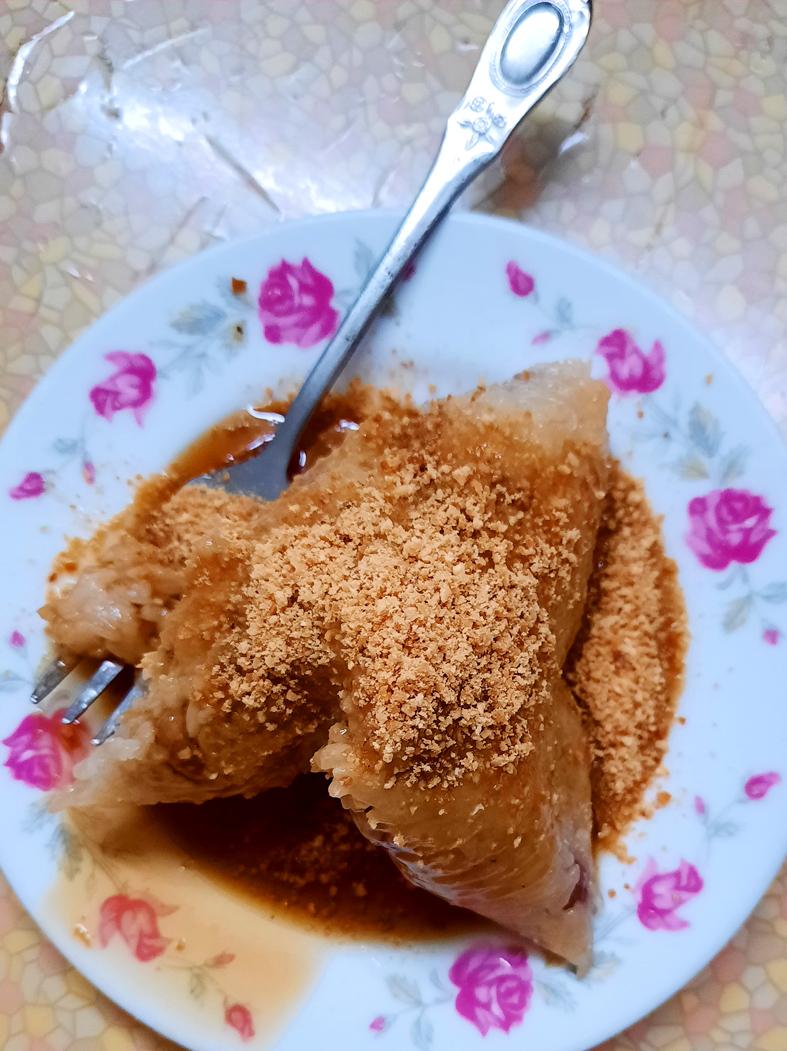
Photo: Steven Crook
Rather than order the signature milkfish congee, I ordered a small bowl of mixed congee (NT$60) with a cruller. The ratio of milkfish, pork, and oysters was about 40:40:20. This concoction was neither particularly salty nor umami, but light and refreshing.
Few people will spend more than NT$100 here, unless they order fish-stomach congee (NT$140) or fish-skin congee (NT$100) with a side dish. The menu also lists several soups, shredded chicken with rice, and braised minced pork with rice.
Taking an indirect route to my second food appointment, I came across a boarded-up building that I guessed had been a place of entertainment. In fact, it was once a clinic.
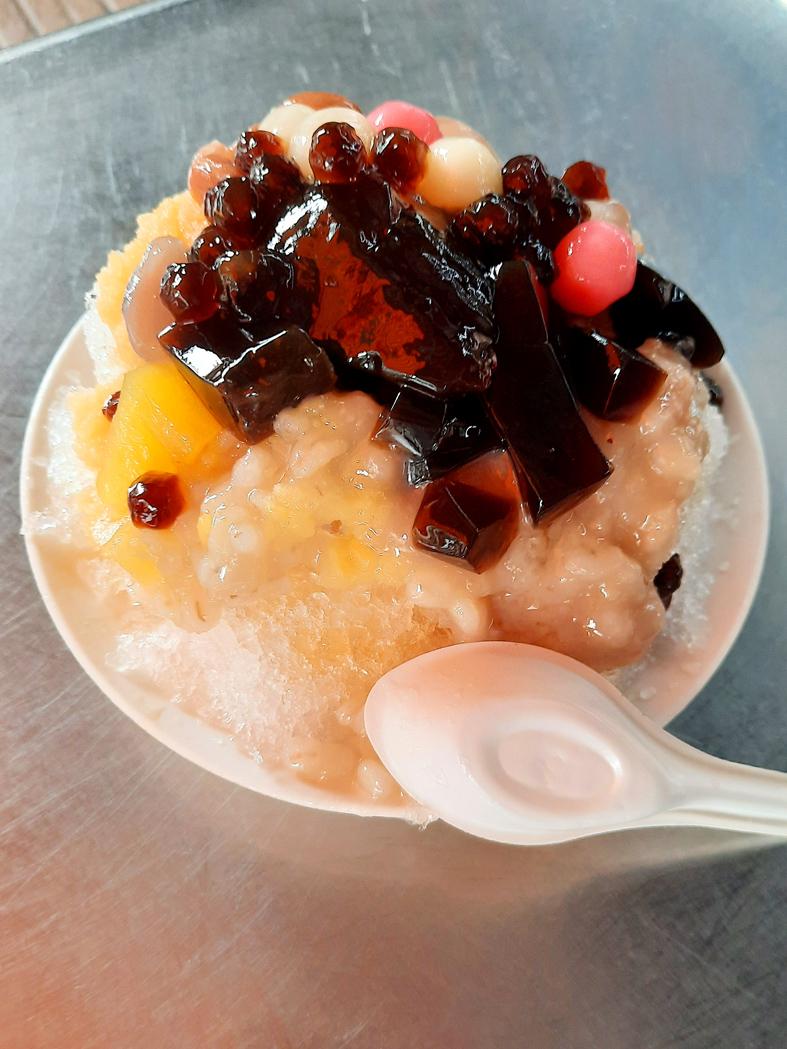
Photo: Steven Crook
Tomomatsu Hospital (友松醫院) at 162 Sinle Street (新樂街) was founded in 1937 by Lo Jung-chin (駱榮金), a Hsinchu native and graduate of what later became National Taiwan University’s College of Medicine. Lo specialized in dermatology and the treatment of syphilis and gonorrhea.
Thanks to its stylish Art Deco-influenced appearance, the clinic was long regarded as a Kaohsiung landmark. Close to the street corner, between the first and second floors, there are small reliefs of human figures. They look rather like the sculptures of saints you might find in a church in Europe.
This summer, the Kaohsiung City Government announced a tendering process which should eventually lead to the clinic’s restoration.
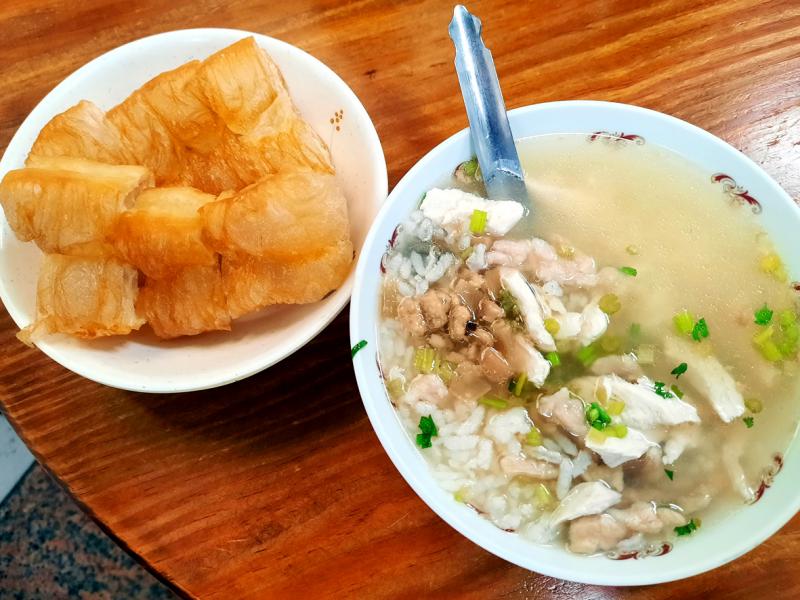
Photo: Steven Crook
FOOD AND MORE FOOD
A few minutes after snapping photos of Tomomatsu Hospital, I took a seat at No-Sign Zongzi Specialists (無招牌肉粽專賣店), on the edge of a small morning market at 29, Lane 242 Sinle Street.
At NT$35 for a relatively small pyramid of glutinous rice, the zongzi here aren’t Taiwan’s cheapest. However, I opted for a peanut zongzi (over the more popular pork version) and I wasn’t disappointed.
The two men working here are indeed specialists, creating something which is satisfying without being stodgy.
No-Sign, which some sources refer to as A-Bo Zongzi (阿伯肉粽), operates from 6:30am to around midday “almost every day of the year,” according to the younger of the two men.
Tramping southward en route to Yongbo Pig’s Tongue Vermicelli (勇伯冬粉豬舌), I passed half a dozen businesses that specialize in reconditioning and selling secondhand boat gear.
The first two refused me permission to take photos of the items piled in front of their workshops, which made me wonder if some law is being skirted. Anyhow, if you need a pre-owned mooring winch or valve wheel, Gongyuan 2nd Road (公園二路) is a good place to look for one.
Yongbo Pig’s Tongue Vermicelli is at 56-1 Bisin Street (必信街), a quiet residential road near Pier-2 Art Center (駁二藝術特區). I wanted to try their food because I’ve never knowingly eaten pig’s tongue. Then again, I’ve had plenty of supermarket sausages, and I’m told they include every part of a pig’s body.
Unlike many Taiwanese noodle dishes, which are three-quarters carbohydrates, Yongbo’s signature dish (NT$70) is meat-lover’s delight. Pig’s tongues are much bigger than those of humans, and I’d guess that each serving contains the better part of an entire tongue.
I was expecting the meat to be a good deal chewier that it turned out to be. The broth was absolutely delicious; I could easily have drunk a pint of it.
A bit later in the day, after lots more walking, I paid a visit to one of Taiwan’s best known dessert vendors, Kaohsiung Popo Shaved Ice (高雄婆婆冰). I went to the original shop at 135 Cisian 3rd Road (七賢三路). There’s a swanky new flagship store just down the road at number 98-12; go there if you want to eat in air-conditioned comfort. Prices are the same at both branches.
Figuring Eight Treasures Ice (八寶冰) would include a bit of everything, I handed over NT$55 and was soon digging into a plate of ice topped with chunks of grass jelly (仙草, Chinese mesona), steamed peanuts, tapioca balls, canned pineapple, taro paste, and glutinous rice balls (湯圓). If you count the ice and the syrup, that’s eight. A poster at the shop lists the nutritional value of each treat; mine had a stomach-stretching 559 calories.
I’ve no criticisms of Kaohsiung Popo, and ending on a negative note isn’t my style, but shaved ice has never done much for me. Figuratively as well as literally, it leaves me cold.
Steven Crook has been writing about travel, culture and business in Taiwan since 1996. He is the author of Taiwan: The Bradt Travel Guide and co-author of A Culinary History of Taipei: Beyond Pork and Ponlai.

Behind a car repair business on a nondescript Thai street are the cherished pets of a rising TikTok animal influencer: two lions and a 200-kilogram lion-tiger hybrid called “Big George.” Lion ownership is legal in Thailand, and Tharnuwarht Plengkemratch is an enthusiastic advocate, posting updates on his feline companions to nearly three million followers. “They’re playful and affectionate, just like dogs or cats,” he said from inside their cage complex at his home in the northern city of Chiang Mai. Thailand’s captive lion population has exploded in recent years, with nearly 500 registered in zoos, breeding farms, petting cafes and homes. Experts warn the

The unexpected collapse of the recall campaigns is being viewed through many lenses, most of them skewed and self-absorbed. The international media unsurprisingly focuses on what they perceive as the message that Taiwanese voters were sending in the failure of the mass recall, especially to China, the US and to friendly Western nations. This made some sense prior to early last month. One of the main arguments used by recall campaigners for recalling Chinese Nationalist Party (KMT) lawmakers was that they were too pro-China, and by extension not to be trusted with defending the nation. Also by extension, that argument could be

Aug. 4 to Aug. 10 When Coca-Cola finally pushed its way into Taiwan’s market in 1968, it allegedly vowed to wipe out its major domestic rival Hey Song within five years. But Hey Song, which began as a manual operation in a family cow shed in 1925, had proven its resilience, surviving numerous setbacks — including the loss of autonomy and nearly all its assets due to the Japanese colonial government’s wartime economic policy. By the 1960s, Hey Song had risen to the top of Taiwan’s beverage industry. This success was driven not only by president Chang Wen-chi’s

Last week, on the heels of the recall election that turned out so badly for Taiwan, came the news that US President Donald Trump had blocked the transit of President William Lai (賴清德) through the US on his way to Latin America. A few days later the international media reported that in June a scheduled visit by Minister of National Defense Wellington Koo (顧立雄) for high level meetings was canceled by the US after China’s President Xi Jinping (習近平) asked Trump to curb US engagement with Taiwan during a June phone call. The cancellation of Lai’s transit was a gaudy